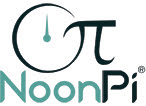9 reasons why marketers use PDH events to connect with engineers

by Eddie Brunet, Jr., P.E., NoonPi President
In a PDH event, such as a webinar or lunch & learn, you educate the engineer on a topic related to the products you sell, and you award professional development hours (PDH) to the engineer.
Here are 9 reasons why industrial marketers use PDH events to connect with engineers:
1. Engineers are required to earn PDH credits.
Busy engineers who ignore marketing messages will find the time to attend PDH events because they need PDH credits for license renewal.
Per a survey by IHS Engineering360 Media Solutions, the average engineer is juggling 4 projects at once, and 55 percent of engineers said they are now asked to do more with less. Management’s edict to do more and do it faster with less resources means that engineers are overwhelmed. There just isn’t enough time in the day to research and vet new manufacturers and new products. It’s much quicker and easier to just specify the same widget that was used on the last project.
This works to your disadvantage if you are an industrial manufacturer trying to get your foot in the door. So, how can you get through to busy engineers?
Professional engineers must make the time to earn their PDH credits. Otherwise, they will lose their PE license. An engineer may be too busy to read the industrial trade magazine or surf the social media site where you placed an ad. But invite him to attend a free webinar where he can earn his required PDH, and he’ll jump at the chance.
2. Establishes credibility.
Demonstrate topic authority and position your company as a valuable resource that engineers can rely on to help solve their problems. A PDH event, such as an educational webinar, allows you to begin building relationships with engineers. This can help to reduce skepticism and build trust, making it more likely that an engineer will consider specifying your product in the future.
As an engineer attends your PDH events and learns from your salesperson’s or SME’s wealth of knowledge and experience, he will come to view them as a topic authority. He will see your company as a trusted information source that he can rely on to help solve his problems.
It’s important to understand that a PDH event is a demand marketing tool. It’s not a “Get a Quote Now” ad. The goal of demand marketing is to get in front of engineers and gain their trust BEFORE they have a need for your product.
Many engineers have a problem you can help solve, BUT they aren’t currently in a buy cycle. Only about 1-3% of potential buyers are looking for a solution right now. If your marketing is only geared towards buyers who are ready right now, you’re missing out on all the prospects who could be buying from you in 6 months or a year from now.
3. Humanize your brand.
Create an authentic human connection so engineers see real people when they think of your brand – not a faceless corporation.
There are a number of ways you can disseminate information to engineers: white papers, blogs, case studies, newsletters, and videos. These are all great content marketing options. If you are having success with these, then keep doing what you’re doing. But consider supplementing your existing content with PDH events. What differentiates webinars and lunch & learns from other content is a higher level of engagement. A webinar or lunch & learn allows your salesperson to connect with engineers on a personal level.
You don’t get that level of connection with a white paper or a newsletter.
Sure, you can post a video on social media or your website and engineers will be able to connect a face and a voice with your company. But a prerecorded video doesn’t allow any interaction. A webinar or a lunch & learn, on the other hand, allows the engineer to interact in real time with your instructor. Plus, how many engineers are going to sit through a 1-hour video? With a PDH event, you have a captive audience of engineers that are happy to give you a full hour of their time in exchange for free PDH credit.
4. Engineers crave information.
Most engineers recognize gaps in their knowledge that need to be filled by experts. You can be that expert!
Engineering is a complex and ever-evolving field. Engineers undergo a very demanding academic curriculum, and their jobs require they pay close attention to detail. Mistakes can result in schedule delays, cost overruns and even loss of life. The old adage “measure twice, cut once” definitely applies to engineers.
As such, it is important for engineers to recognize gaps in their knowledge and leverage the expertise of others to educate themselves about the latest technologies and industry best practices to provide the best, safest solutions to their clients. By hosting PDH events, you can help equip engineers with knowledge that will make them better engineers and by extension help safeguard the health, welfare, and safety of the public.
5. Effective throughout the entire marketing funnel
Hosting PDH events is an effective demand marketing tool for reaching new prospects AND for staying “top of mind” with existing customers.
Since the early 1990s, industrial manufacturers have been using lunch & learn presentations to reach engineers where they work. The lunch & learn is still the productive workhorse that it has always been. But now the industrial marketer has another powerful tool in her toolchest: webinars. Webinars and lunch & learns allow you to introduce yourself to new prospects and begin to plant the seeds for a business relationship.
For existing customers, a PDH event is another touch point to help you deepen your relationship with engineers. It need not replace your current sales and marketing efforts, especially if they’re producing results. Rather, it is an opportunity to amplify what you’re already doing.
One best practice is to leverage your relationship with an existing customer to reach new prospects. Here’s how to do it:
Suppose your company manufactures centrifugal pumps. Rachel, a mechanical engineer, is a customer who works for ABC Engineering. Roger, your salesperson, has worked on several projects with Rachel and calls on her frequently. Roger asks Rachel if she would be willing to schedule a lunch & learn presentation at ABC Engineering’s office. Rachel agrees and works with ABC’s administrative staff to reserve a meeting room and invite other engineers at the firm to attend.
With one phone call you gain access to a room full of new prospects. When I worked for a mid-size engineering firm in the 1990s, manufacturers’ lunch & learns typically drew an audience of 30+ mechanical engineers. A webinar for a large engineering firm multi-cast at several sites can reach an audience of several hundred engineers.
6. The Principle of Reciprocity
Create goodwill with engineers by providing something of real value to them with no expectation of receiving something in return.
In Influence: The Psychology of Persuasion, Robert Cialdini writes that we are hard-wired to respond positively to a gift, even if we didn’t ask for it, or even want it. We automatically feel indebted to the giver, regardless. That is the principle of reciprocity.
Marketers have used the principle of reciprocity for decades. The children’s charity, March of Dimes, has sent out direct mail pieces for years with a dime showing through a transparent window in the envelope. Why? Because it works!
It doesn’t matter that you never asked them to send you a dime. Some people feel obligated to return the favor by sending a check to the charity. That little dime mailer returns about $20 million annually to the March of Dimes. It’s a great illustration of the fact that reciprocity often results in exchanges of completely unequal value.
The principle of reciprocity is at work when you host free PDH events for engineers.
To maximize the benefits of reciprocity, the thing you provide should have real benefit to the recipient if you want to truly create goodwill.
Engineers who attend your PDH event will be appreciative of the fact that you are providing something of real value to them: Knowledge and PDH credits.
If you reach out to these engineers at some point in the future, chances are they will feel some obligation to answer your email or return your phone call. Of course, there’s no guarantee. But who do you think is going to be more receptive to receiving your call? The engineer who attended your webinar and recognizes the name and voice on the other end of the line or an engineer that you cold call from a list?
7. Discover Your Customers’ Pain Points
Use attendees’ questions and feedback to gain a better understanding of how your products can best address the problems engineers are facing.
You need to talk to customers. Customer research is a marketing strategy game-changer. It allows you to deeply understand your target engineers’ problems so you can tailor your marketing messages (and your products) to address those pain points. The problem is that most industrial marketers don’t have access to customers or prospects.
Marketing’s role at many industrial manufacturers is relegated to providing sales support. Run the trade show, update brochures and catalogs, place an ad in a trade magazine…
If you ask management to speak to your customers’ engineers, the answer is “Sales can tell you everything you need to know.” But, sales can’t tell you everything you need to know.
A PDH event gives you an opportunity to do customer research. You can survey the audience during a webinar or lunch & learn to get feedback about engineers’ pain points. Just don’t overdo it. The bulk of the presentation should be educational.
You can also reach out to some of the engineers after the webinar to conduct customer research. The engineers are “warm” at this point because a) you are not a complete stranger to them, b) you have demonstrated your company’s expertise on the subject matter, and c) you have already provided something of value to them.
PDH events are not just for demand generation. They can also be used as a listening tool for customer research.
8. Collect Data for Effective Targeting of Prospects
Engineers readily share their contact info and job data during event registration, which allows you to identify the best prospects for follow-up.
You are required to collect information at your PDH event, such as the engineer’s name and email address, so you can issue a certificate of completion for PDH credit. At the same time, you can ask for employer’s name, engineering discipline, the engineer’s job title, and other information that will help you gauge whether the engineer is a good prospect.
Engineers are accustomed to providing this sort of information when registering for a free PDH event. But don’t overdo it. More information is obviously better for you, but asking for too much will suppress enrollment.
Also, think twice before asking questions about purchasing authority (a common practice with some industry trade magazines) or whether the engineer plans on buying your type of widget within the next 3 months, 6 months, etc. Yes, it would be nice to know that Bob has purchase authority up to $500K, while Fred has zero purchase authority. But asking this type of question will be a turnoff to many engineers.
9. Measurable ROI
Electronically transfer your attendee list into a CRM, allowing you to efficiently track leads through long consultative sales processes.
Long sales cycles tend to accompany big industrial B2B purchases. Oftentimes, lots of people are involved in the sales process. It’s easy to lose track of where the original lead came from. Did it come from a golf tournament sponsorship or a trade publication ad? Perhaps the lead was an engineer who downloaded a whitepaper from your website.
A big part of the problem with tracking ROI for an industrial purchase is lack of communication between the marketing and sales teams. Marketing might know which efforts drive the most traffic and leads. But they don’t know which leads convert to sales. The sales team knows which leads convert, but they don’t know where the leads came from. In short, neither team knows which marketing activities lead to a sale.
The problem is that data at the top of the funnel is locked away in marketing tools such as Google Analytics and the bottom of the funnel data is confined to CRM systems which are typically handled by the sales team. A nice feature of PDH events is that prospects can be tracked from inception to conversion without a lot of effort.
You need to electronically store engineers’ information anyway to meet state board recordkeeping requirements for PDH providers. The electronic format can be as simple as a spreadsheet. This information can then be imported into a CRM system electronically, allowing you to efficiently track conversions and measure the ROI of your PDH program.
If you’d like to speak with an expert to learn more about how to use PDH events to connect with engineers, book a free consultation.
For more articles like this one, visit our Learning Center.



